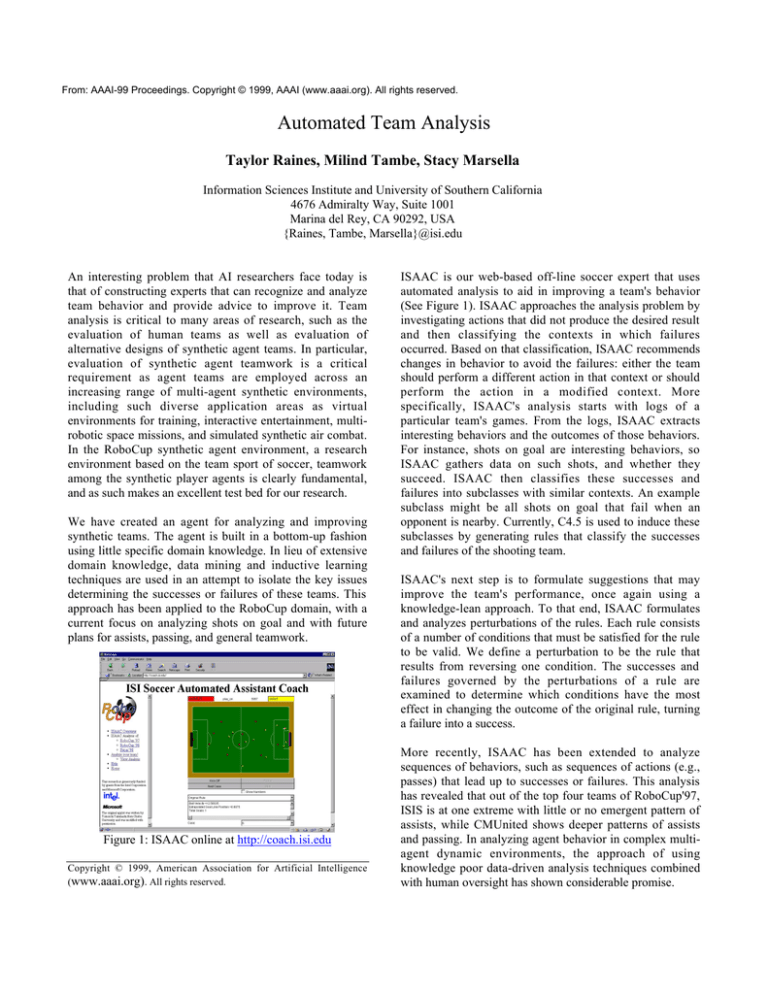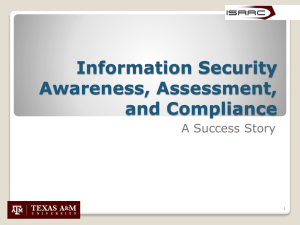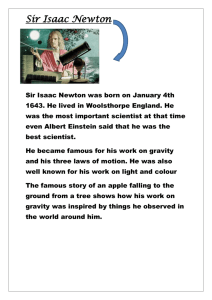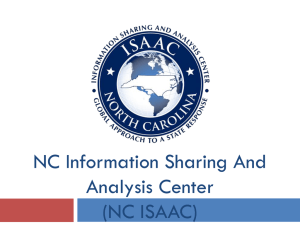Automated Team Analysis Taylor Raines, Milind Tambe, Stacy Marsella
advertisement

From: AAAI-99 Proceedings. Copyright © 1999, AAAI (www.aaai.org). All rights reserved.
Automated Team Analysis
Taylor Raines, Milind Tambe, Stacy Marsella
Information Sciences Institute and University of Southern California
4676 Admiralty Way, Suite 1001
Marina del Rey, CA 90292, USA
{Raines, Tambe, Marsella}@isi.edu
An interesting problem that AI researchers face today is
that of constructing experts that can recognize and analyze
team behavior and provide advice to improve it. Team
analysis is critical to many areas of research, such as the
evaluation of human teams as well as evaluation of
alternative designs of synthetic agent teams. In particular,
evaluation of synthetic agent teamwork is a critical
requirement as agent teams are employed across an
increasing range of multi-agent synthetic environments,
including such diverse application areas as virtual
environments for training, interactive entertainment, multirobotic space missions, and simulated synthetic air combat.
In the RoboCup synthetic agent environment, a research
environment based on the team sport of soccer, teamwork
among the synthetic player agents is clearly fundamental,
and as such makes an excellent test bed for our research.
We have created an agent for analyzing and improving
synthetic teams. The agent is built in a bottom-up fashion
using little specific domain knowledge. In lieu of extensive
domain knowledge, data mining and inductive learning
techniques are used in an attempt to isolate the key issues
determining the successes or failures of these teams. This
approach has been applied to the RoboCup domain, with a
current focus on analyzing shots on goal and with future
plans for assists, passing, and general teamwork.
Figure 1: ISAAC online at http://coach.isi.edu
Copyright © 1999, American Association for Artificial Intelligence
(www.aaai.org). All rights reserved.
ISAAC is our web-based off-line soccer expert that uses
automated analysis to aid in improving a team's behavior
(See Figure 1). ISAAC approaches the analysis problem by
investigating actions that did not produce the desired result
and then classifying the contexts in which failures
occurred. Based on that classification, ISAAC recommends
changes in behavior to avoid the failures: either the team
should perform a different action in that context or should
perform the action in a modified context. More
specifically, ISAAC's analysis starts with logs of a
particular team's games. From the logs, ISAAC extracts
interesting behaviors and the outcomes of those behaviors.
For instance, shots on goal are interesting behaviors, so
ISAAC gathers data on such shots, and whether they
succeed. ISAAC then classifies these successes and
failures into subclasses with similar contexts. An example
subclass might be all shots on goal that fail when an
opponent is nearby. Currently, C4.5 is used to induce these
subclasses by generating rules that classify the successes
and failures of the shooting team.
ISAAC's next step is to formulate suggestions that may
improve the team's performance, once again using a
knowledge-lean approach. To that end, ISAAC formulates
and analyzes perturbations of the rules. Each rule consists
of a number of conditions that must be satisfied for the rule
to be valid. We define a perturbation to be the rule that
results from reversing one condition. The successes and
failures governed by the perturbations of a rule are
examined to determine which conditions have the most
effect in changing the outcome of the original rule, turning
a failure into a success.
More recently, ISAAC has been extended to analyze
sequences of behaviors, such as sequences of actions (e.g.,
passes) that lead up to successes or failures. This analysis
has revealed that out of the top four teams of RoboCup'97,
ISIS is at one extreme with little or no emergent pattern of
assists, while CMUnited shows deeper patterns of assists
and passing. In analyzing agent behavior in complex multiagent dynamic environments, the approach of using
knowledge poor data-driven analysis techniques combined
with human oversight has shown considerable promise.




